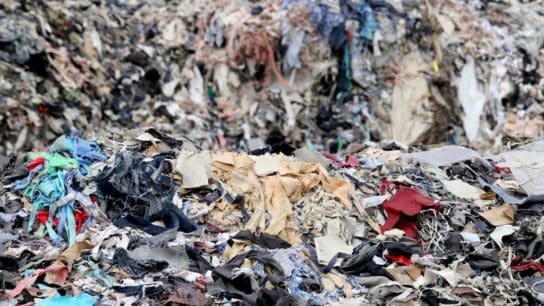The team of US scientists found microplastics in 180 of 182 seafood samples they analyzed, including pink shrimps, Chinook salmon, and lingcod.
—
A new study has provided evidence of the widespread presence of plastics fragments and other human-made particles in seafood, reinforcing previous research uncovering widespread contaminants across the food chain.
Researchers in Oregon, US, sampled a total of 182 individual seafood species for anthropogenic particles, including microfibers shed from laundering clothing, microplastic beads from personal care products, and tire wear resulting from tire degradation.
Of the vessel-retrieved and retail-purchased individuals sampled, 180 contained some levels of anthropogenic particles, including pink shrimp, black rockfish, lingcod, Pacific herring, lamprey, and Chinook salmon. The latter had the lowest concentrations of particles while pink shrimp had the highest. Only two individuals – one vessel-retrieved Pacific herring and one vessel-retrieved lingcod – had no detected anthropogenic particles in their tissue.
“We found that the smaller organisms that we sampled seem to be ingesting more anthropogenic, non-nutritious particles,” said study lead Elise Granek, a professor of environmental science and management at Portland State University.
Microplastics – tiny plastic particles measuring less than 5 millimeters in diameter, close in size to a sesame seed, that result from the degradation of larger plastics – have been found in bottled drinking water, human blood and organs, mammal feces, and even the air we breathe. While the long-term effects are still unclear, research indicates that microplastics ingestion can lead to various health problems, such as endocrine disruption and potentially cancer.
The effects of plastic pollution on wildlife are particularly alarming. Marine animals such as sea turtles, dolphins, and seabirds often ingest plastic debris, mistaking it for food. In 2019, a turtle hatchling was found dead with 104 pieces of plastic in its stomach. According to the UN, more than 51 trillion microplastic particles have already littered the world’s seas, and it is predicted that 99% of marine species will consume microplastic by 2050 if nothing is done to slow down plastic pollution.
Susanne Brander, an ecotoxicologist and associate professor in Oregon State University’s College of Agricultural Sciences, called the findings “very concerning,” adding that they have wide implications not just for these species but also for other organisms and potentially even humans.
But Granek said the study’s findings should not necessarily disincentivize people to eat seafood but rather promote research of “effective solutions” to reduce the amount of microplastics entering marine ecosystems. “If we are disposing of and utilizing products that release microplastics, those microplastics make their way into the environment, and are taken up by things we eat,” she said. “What we put out into the environment ends up back on our plates.”
“We’re continuing to do work to understand the effects of anthropogenic particles on animals, but we’re also moving into experimental work to test what are effective solutions to reduce microplastics entering marine ecosystems,” Granek said.
This story is funded by readers like you
Our non-profit newsroom provides climate coverage free of charge and advertising. Your one-off or monthly donations play a crucial role in supporting our operations, expanding our reach, and maintaining our editorial independence.
About EO | Mission Statement | Impact & Reach | Write for us














